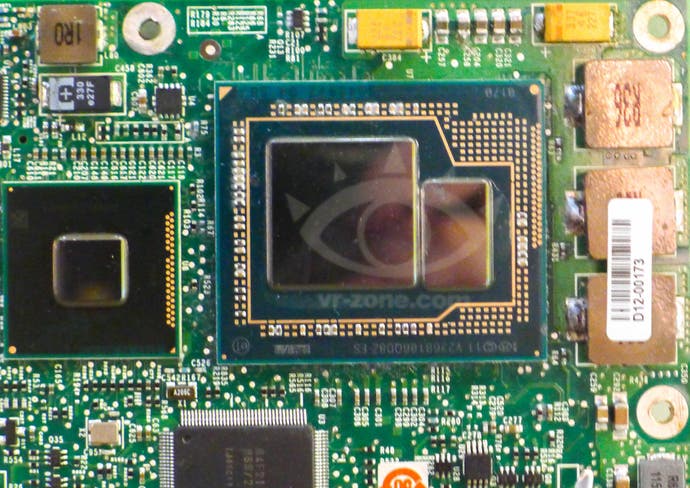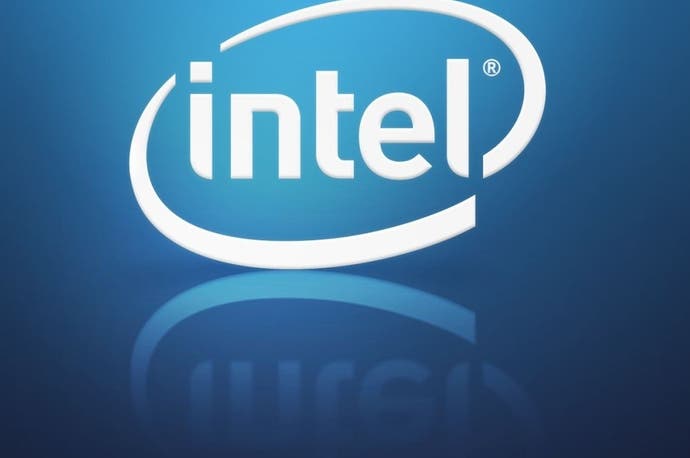Intel unveils Iris - its next-gen graphics tech
On-chip processor targets dedicated GPU gaming performance.
It's safe to say that PC integrated graphics chips don't enjoy the most robust of reputations - a situation set to change radically with the release of Intel's fourth generation Core processors, code-named Haswell. Indeed, the firm is so keen to push the new graphics technology that it has re-branded its integrated GPU line, with the high-end parts now called Iris and Iris Pro.
Within Intel, the unofficial target performance of the Iris Pro part is to match or even exceed Nvidia's popular GT650M part, which marries up two Kepler SMX processor units with 2GB of GDDR5 memory. This chip is currently found in mid-range gaming laptops, as well as Apple's 15-inch Retina MacBook Pro - which may well be where Intel got the inspiration for the Iris name. To get some idea of what a quad-core Intel chip achieves in concert with the GT650M, check out our Retina MacBook Pro gaming review - essentially we're looking at the likes of Battlefield 3 and Crysis 2 running at 1600x900 with decent quality settings, representing a significant step beyond current-gen console. Achieving this level of performance isn't easy, particularly when integrated graphics chips tend to ship with no dedicated RAM and can only access DDR3 system RAM - fine for general computing tasks, not so good for gaming.
With the top-end Iris Pro, Intel's solution to the bandwidth issue is ambitious - alongside the main processor, there's a reported 128MB of ultra-fast eDRAM to provide the bandwidth that the system RAM can't produce. To put that into perspective, Xbox 360 uses a similar technique but only has 10MB of eDRAM attached to the GPU, while the next-generation Xbox - released later this year - has 32MB of embedded memory to do the same job (according to Microsoft's leaked whitepapers). eDRAM isn't cheap to produce, so only high-end versions of the Haswell chip get the extra memory - Intel's presentation suggests that it's just the quad-core mobile parts get the top-end GPU offering. Cheaper quads without the eDRAM are also available, and while there's clearly a boost to performance here over the existing Intel HD 4000, it's not quite as pronounced.
"Intel has a commanding lead in terms of processing power and market share - Iris is its attempt to share-steal in the graphics space from AMD and Nvidia."
The Pro-level part really flexes its muscles in the desktop arena, where clock speeds are significantly increased and where there's much more thermal headroom. Intel's 3DMark 11 testing suggests a 3x performance boost over the HD 4000 graphic tech found in the current third gen Core "Ivy Bridge" processors when comparing the existing 3770K to the new 4770R, while the new 4770K gets a 1.8x increase. So what's the difference between the "R" and "K" offerings? Well, only the "R" chips get the eDRAM, the traditional "K" processors utilise existing system RAM, giving some idea of the performance boost the dedicated memory offers (and perhaps by extension, why Microsoft needed it for its next-gen console with GDDR5 off the table).
Reports also suggest that the "R" chips aren't available as traditional processors that slot into a separate motherboard - these will be soldered directly onto the board and it's uncertain whether enthusiasts will be able to buy them at all, or whether the "R" chips will only be available to OEMs like Dell or HP. Intel is presumably betting - probably quite rightly - on enthusiasts sticking to their dedicated graphics cards in the desktop scenario. We've asked Intel to clarify to what extent the "R" line is available to those looking to build their own PCs.
So, what's Intel's strategy here? Across the entire market, it enjoys anything up to a massive 85 per cent share in desktop and laptop processors. However, OEMs often pair up Intel processors with AMD or Nvidia graphics cards, simply because the GPU horsepower isn't there in the integrated solution. With Iris and Iris Pro, Intel is making its GPUs far more attractive, potentially share-stealing from Nvidia/AMD and offering significant power efficiency savings in the process. So perhaps Apple won't need to go to Nvidia for its next Retina MacBook refresh - it'll have the power it needs in an all-in-one solution.
"From HD 5000 up to Iris Pro, the fourth gen Core processors offer a significant bump in performance over the current Ivy Bridge line."
We see something of a similar strategy in the ultrabook space, too. Regular readers may recall that Intel HD 4000 struggled somewhat to provide decent gaming performance on more modern games in the Surface Pro tablet, based on an ultrabook ultra-low voltage processor. Even in the higher-end mobile chips, HD 4000 wasn't exactly an exemplary performer, bested by AMD's Trinity APU. The new Haswell line for ultrabooks provides up to 50 per cent of extra performance while dropping peak power consumption from 17W down to 15W - an impressive feat bearing in mind that the chip is still fabricated at the same 22nm process. However, curiously, Intel has also introduced a new 28W part that more than doubles graphical performance.
This might seem like a strange decision bearing in mind that ultrabook tech is all about power efficiency, but Intel is simply reacting to what the market wants. Once again, the aim here is to provide another option to manufacturers who combine Intel CPUs with third-party graphics chips - just as Acer did with its Ultra M3 ultrabook, which pared up a low-power Intel CPU with Nvidia's GT640M - with some impressive results. The new Haswell 28W ultrabook part should easily outperform current-gen console, but will probably end up being utilised in larger 14- or 15-inch laptops just like the Acer.
The arrival of next-gen Intel integrated graphics should also offer up bonuses in other areas. There are suggestions that the eDRAM Haswell chips may well be able to use that extra 128MB of fast memory as an extra layer of cache for the CPU when graphics tasks are not active. Compute tasks and QuickSync video encoding should also see substantial improvements too across the entire line, whether there's eDRAM present or not. In terms of the CPU component of Haswell, we should expect to see a relatively modest 10-15 per cent boost to performance, plus support for ultra-low power draw "sleep" states - a crucial addition for making Core architecture viable for mobile devices. Significant battery life improvements for laptops are also being mooted along with on-chip support for the highly promising - if under-utilised - Thunderbolt interface.
The Haswell fourth generation Core processors start shipping at the beginning of June.
"Iris Pro boosts performance massively via embedded RAM attached directly to the main processor."














